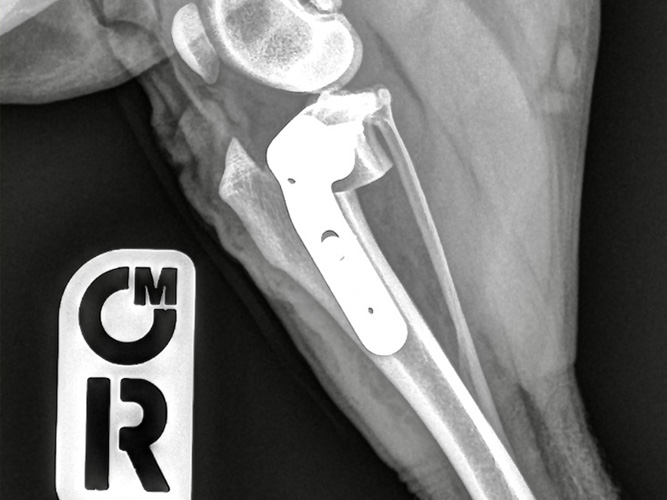Can you give dogs paracetamol?Share on
Giving pet dogs human painkillers is a very tempting thing to do if your pooch is in pain. We strongly advise not to and this guide will tell you why.
What is paracetamol?
Paracetamol is a common painkiller with an active ingredient – acetaminophen – that works to ease aches and pains and reduce temperature in humans.
While it’s safe and effective for people, you should never be tempted to use it to treat your pet without veterinary advice, as it can poison them and cause a serious or fatal reaction.
Always keep human medicines out of the reach of your pets, and always remember: though the medicine is safe for you, it might not be safe for your pet.
How can I tell if my dog is in pain?
Whether your dog has suffered an injury or has an underlying condition, it can sometimes be hard to tell when they’re in pain. Often, they suffer in silence, but there are tell-tale signs that your pet is uncomfortable and needs your help.
Some signs are more obvious than others, but your pet will let you know – in their own way – that something isn’t quite right. These signs include:
Changes in habits
You might notice that your dog is sleeping more, or that they’ve changed how much they eat and drink. A loss of appetite – or difficulty eating hard food – can indicate pain (including dental pain), as can drinking more or less water than usual.
Unusually aggressive or antisocial behaviour
Your once-friendly dog might snap, or avoid being petted or fussed, or even hide away.
Barking or yelping
Your dog might bark more, or growl, howl or yelp. If your dog is more vocal than usual, they might be in pain.
Excessive grooming
Is your dog constantly licking their paws or cleaning themselves? It could be that they’re trying to sooth themselves or ease pain. While small cuts can be an obvious source of discomfort for your pet, some pain might be internal, so it’s always best to get it checked out.
Restlessness
If your dog is pacing, struggling to get comfortable, or sleeping less, they could be telling you that something isn’t quite right.
Breathing changes
Have you noticed that your dog is panting more, or more heavily, even while resting? Or is their breathing more shallow, even after exercise? This could be a sign that they’re finding breathing painful, which could indicate an underlying issue.
Shaking and trembling
This can be a sign of pain or something more insidious, such as poisoning or kidney disease.
Bodily changes
Swollen limbs or a hunched or rigid stature can indicate that your dog is in pain, so it’s important that any changes in your pet’s body or posture are addressed by your vet.
Difficulty moving
Limping or stiff limbs, as well as difficulty climbing stairs, running, jumping or getting up can be signs of pain. You might also notice that your dog is less interested in exercise.
Why shouldn’t I give paracetamol to my dog?
It’s distressing to see your pet suffering or in pain, but it’s really important that you’re not tempted to give them the types of over-the-counter painkillers that you would take to alleviate your own minor aches and pains.
Paracetamol, while safe for humans, can be extremely toxic for your dog (particularly if the wrong dosage is given), and can result in serious liver damage or problems with their red blood cells.
That’s because the body needs to produce an enzyme called glucuronyl transferase to enable the active ingredient to be ingested, and while your dog can produce this enzyme, actually consuming paracetamol and its active ingredient can harm your pet. It’s therefore always best to avoid giving any human painkillers – including paracetamol – to your dog.
You should always speak to your vet if you suspect your dog is in pain, as they’ll be able to find the cause and recommend suitable painkillers – such as a veterinary version of paracetamol – to make your pet more comfortable.
What happens if I give my dog paracetamol?
No dog should be given paracetamol without being prescribed it by a vet. But if your dog does accidentally ingest paracetamol, the effects can vary depending on the size of the dog.
For instance, a dog that weighs 20kg would only suffer toxic effects after eating seven 500mg tablets. Smaller dogs would need to ingest far fewer in order to become unwell and suffer problems with their livers and red blood cells.
If you do give your dog paracetamol (without your vet prescribing it), or your dog eats some tablets by accident, they might exhibit conditions that include:
- Stomach problems
- Difficulty breathing
- Vomiting
- Drooling excessively
- Becoming depressed and withdrawn
If you notice any of these effects, make sure you take your dog to your vet immediately.
As discussed, human paracetamol isn’t suitable for dogs, but there may be times when your vet prescribes a veterinary version of paracetamol – usually if your dog is suffering from:
- Inflammation
- A fever
- An infection
- Chronic pain
But a lot of consideration goes into this decision. For instance, your vet will have carefully considered whether paracetamol is the right drug for your pet, and will factor their breed, age, weight, beed and size into their calculations, as well as whether your pet has any existing liver conditions.
Should your vet prescribe paracetamol for your dog, it’s likely that it will be a dosage of 10mg per kilogram, and should only be given once a day for one or two days.
It’s essential that you follow your vet’s dosage and instructions very carefully while caring for your pet, and monitor and report any vomiting, excessive drooling, breathing problems or listlessness immediately, as these could indicate a serious reaction that will need to be dealt with quickly.
Always follow your vet’s advice and never be tempted to try and treat your pet yourself with human medication.
What should I do instead?
If you suspect your dog may be in pain – whether through injury or an underlying issue – the best thing you can do is take them to your vet to be examined. Don’t try to treat them yourself or guess what might be wrong with them; you may make your pet worse, or cause additional problems.
Rather than prescribing paracetamol, your vet may recommend other painkillers, such as non-steroidal anti-inflammatory drugs (NSAIDs) like carprofen, firocoxib, deracoxib or meloxicam that can treat orthopaedic issues and reduce swelling and joint pain in dogs who’ve had surgery, or who are suffering from arthritis.
They may also prescribe other drugs and treatments, including:
- Gabapentin – used to treat pain caused by damaged nerves. This drug can make your dog sleepy for the first few days.
- Tramadol – a mild opioid medication that can help if your dog is suffering with discomfort that can’t be relieved any other way.
- Supplements – glucosamine and chondroitin can help reduce swelling and aid in cartilage repair, which can ease pain in dogs with joint troubles or arthritis.
It’s always important to visit your vet if you suspect your pet is unwell or in pain. This gives your vet the opportunity to examine them, and find and treat the cause – or help ease symptoms – in a way that’s safe for your dog and gives them the best chance of recovery.
Never be tempted to treat your dog using over-the-counter human pain medication.
What should I do if I give my dog paracetamol?
If your vet has prescribed paracetamol for your dog, it’s essential that you follow their exact instructions – including for dosage, frequency and duration of treatment. If you don’t, and your dog ingests too high a dose, your pet could be at risk of paracetamol poisoning.
If you have given your dog the wrong dose, or if your pet has managed to eat paracetamol meant for human use, you may notice the following symptoms:
- Stomach pain
- Vomiting
- Weakness
- Unwilling to play or exercise
- Drooling
- Breathing problems
- Seizures
- Black poo
- Difficult moving, or being uncoordinated
If your dog is showing any of these signs, it’s essential that you take them to the vet immediately. Paracetamol poisoning can be fatal if not treated quickly, so don’t delay and wait to see if your pet gets better on their own.
What about ibuprofen or aspirin?
You now know never to give your pet human paracetamol, but now you’re probably wondering about ibuprofen and aspirin.
Ibuprofen
Never give your dog ibuprofen. It is highly toxic and can cause significant damage to your dog’s kidneys and stomach. The effects come on quickly and can be fatal, even if your pet has only ingested a small amount. Remember: what’s safe for humans is often very unsafe for our pets.
If your dog has eaten ibuprofen, you should speak to your vet immediately, and look out for signs of a toxic reaction, including:
- Lack of appetite or loss of interest in food
- Lethargy
- Weakness
- Vomiting
- Black, thick poo
Aspirin
While aspirin may be prescribed for some conditions, it’s usually only given for a short period of time as it can have significant side effects, including stomach ulcers and gastrointestinal bleeding. It’s therefore essential that you follow your vet’s exact dosage and instructions, such as giving the pill with food, so as to avoid these harmful effects.
Your vet will never prescribe or recommend aspirin for young dogs as they don’t have the enzyme needed to process the drug effectively, meaning taking the drug can harm them. It’s likely they’ll be given alternative pain relief instead.
Are there any home remedies?
Whether your dog has had an operation or is being treated for a particular condition, it’s important to complement their medication with other remedies, such as reduced exercise, limited movement and a quiet, comfortable space where they can recover.
Your dog might also benefit from a warm or cold compress on the affected area, but be sure to check with your vet to make sure this is a suitable treatment. Most importantly, make sure you give your dog plenty of TLC!
Ultimately, when caring for your pet, never be tempted to administer human pain medication and always speak to your vet if your pet is in pain. Always follow your vet’s advice and instructions when it comes to medication, and don’t be tempted to give your pet more medication than has been prescribed.
Always look out for signs that indicate that your pet is having a reaction to their medication, and make sure you contact your vet immediately if they’re showing any symptoms of toxicity or distress.
-
Previous
-
Next




